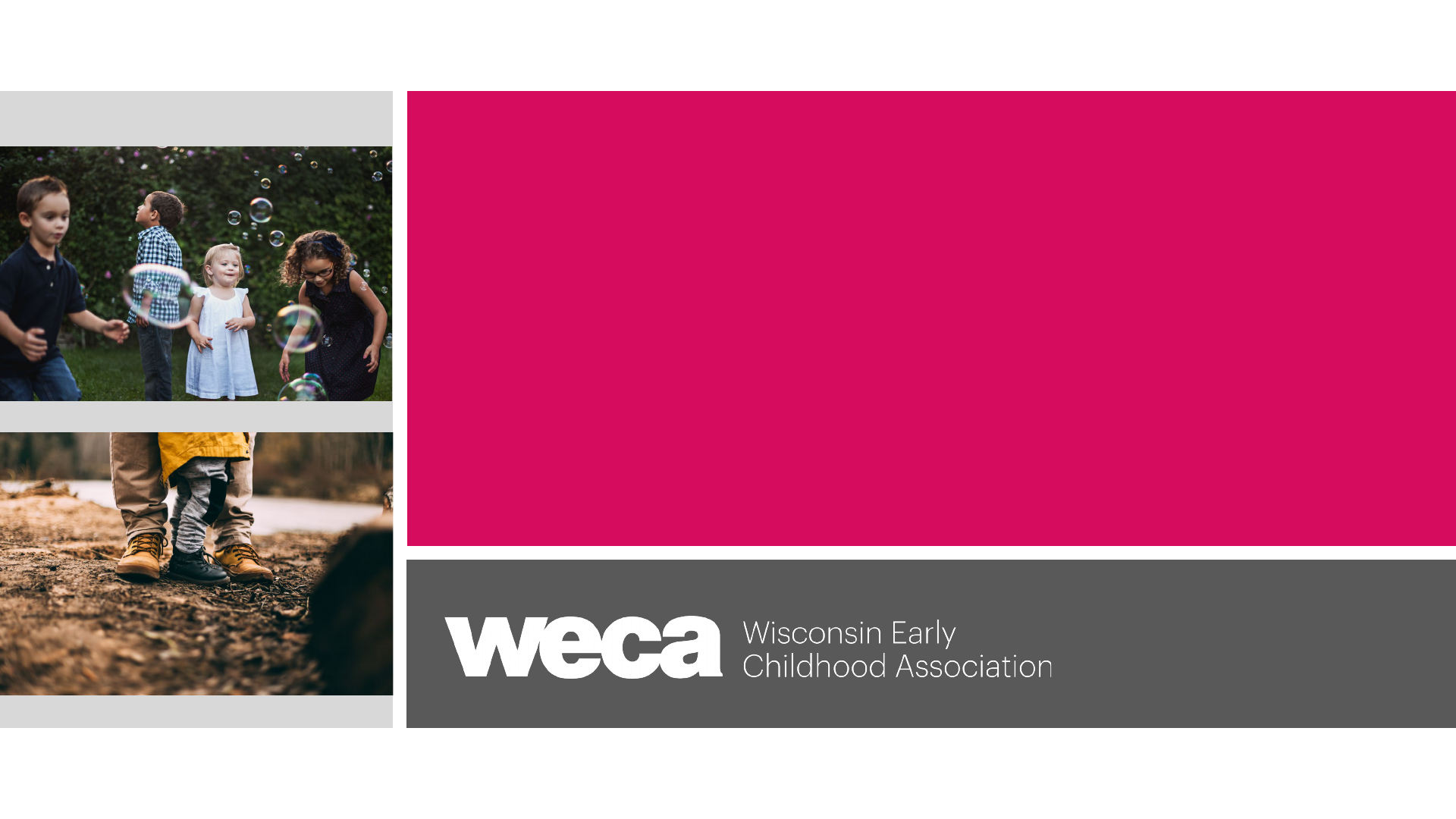
Child Care in Rural Wisconsin:
Unique Challenges & Solutions

Ruth Schmidt
Executive Director
Wisconsin Early Childhood Association
Wisconsin Rural Economic Summit
February 22, 2022

In Their
Words:
Challenges &
Grassroots
Efforts
Source: Wisconsin Public Radio; Wisconsin Partners.
Jackson County Child Care Taskforce
What started as a lobby conversation with a couple of businesses in
Jackson County kind of grew into this grassroots effort to really look
at what are we having for child care issues and how is it impacting
our workforce,” said Marianne Torkelson, chair of Jackson County
Child Care Taskforce and Co-op Credit Union’s Vice President
Business Development and Training.
Wisconsin Top Rural Development Initiative Award, 2020
“Wisconsin Rural Partners recognizes the need for child care
services in rural communities and applauds Kickapoo
Conversations and the WEESSN program as outstanding example
of the many local efforts across the state to improve the lives of
citizens in rural Wisconsin,” said Sandy Decker, WRP
President. “These types of projects are notable for showcasing the
variety and breadth of successful local efforts to enhance the quality
of life in the rural areas of our state.”

Challenges & Grassroots Efforts, Cont.
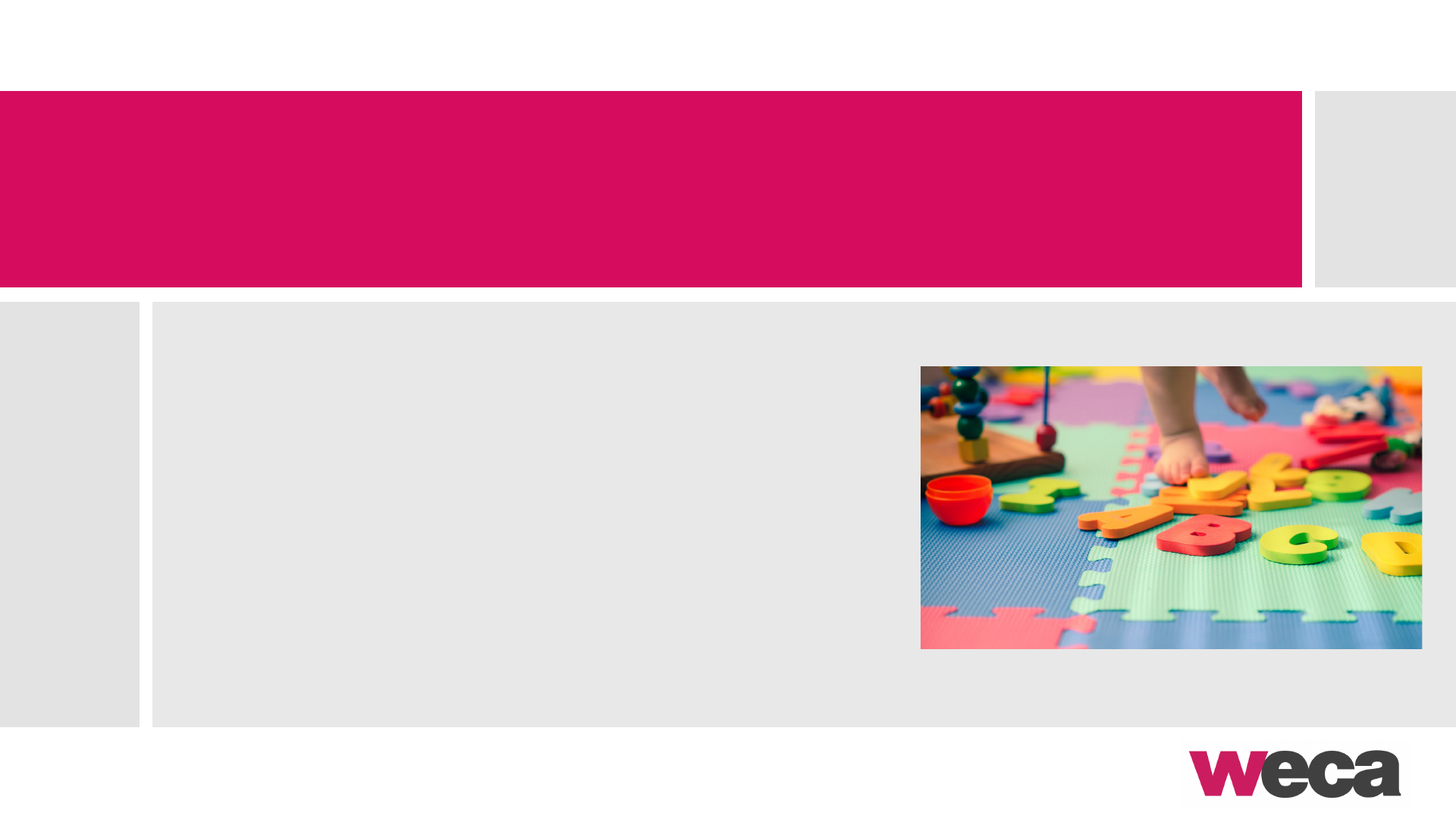
The Landscape: What the Data Says
Potential Need: 288,430 Children
Supply: 171,040 Slots
Gap: 117,090 Slots
Percent Gap: 40.6% of Children vs. 31% Nationally
Economic Impact: $2.5 to $3.8 Billion
Source: Bipartisan Policy Center.
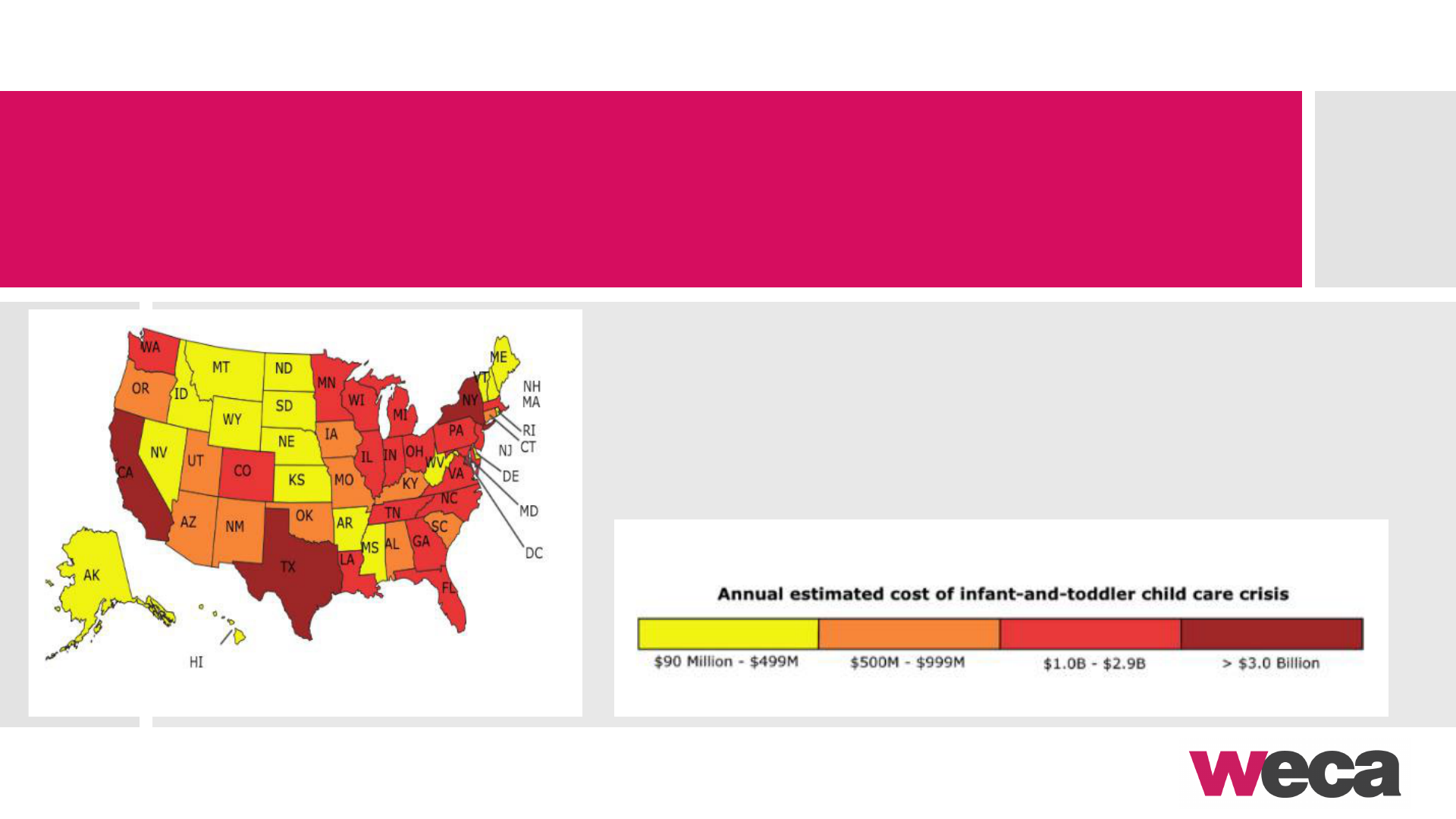
The Landscape: What the Data Says, Cont.
In Wisconsin, the shortage of infant-toddler child care
results in an annual economic loss of $1.1 billion.
Source: Council for a Strong America, Want to Grow the Economy? Fix the Child Care Crisis.
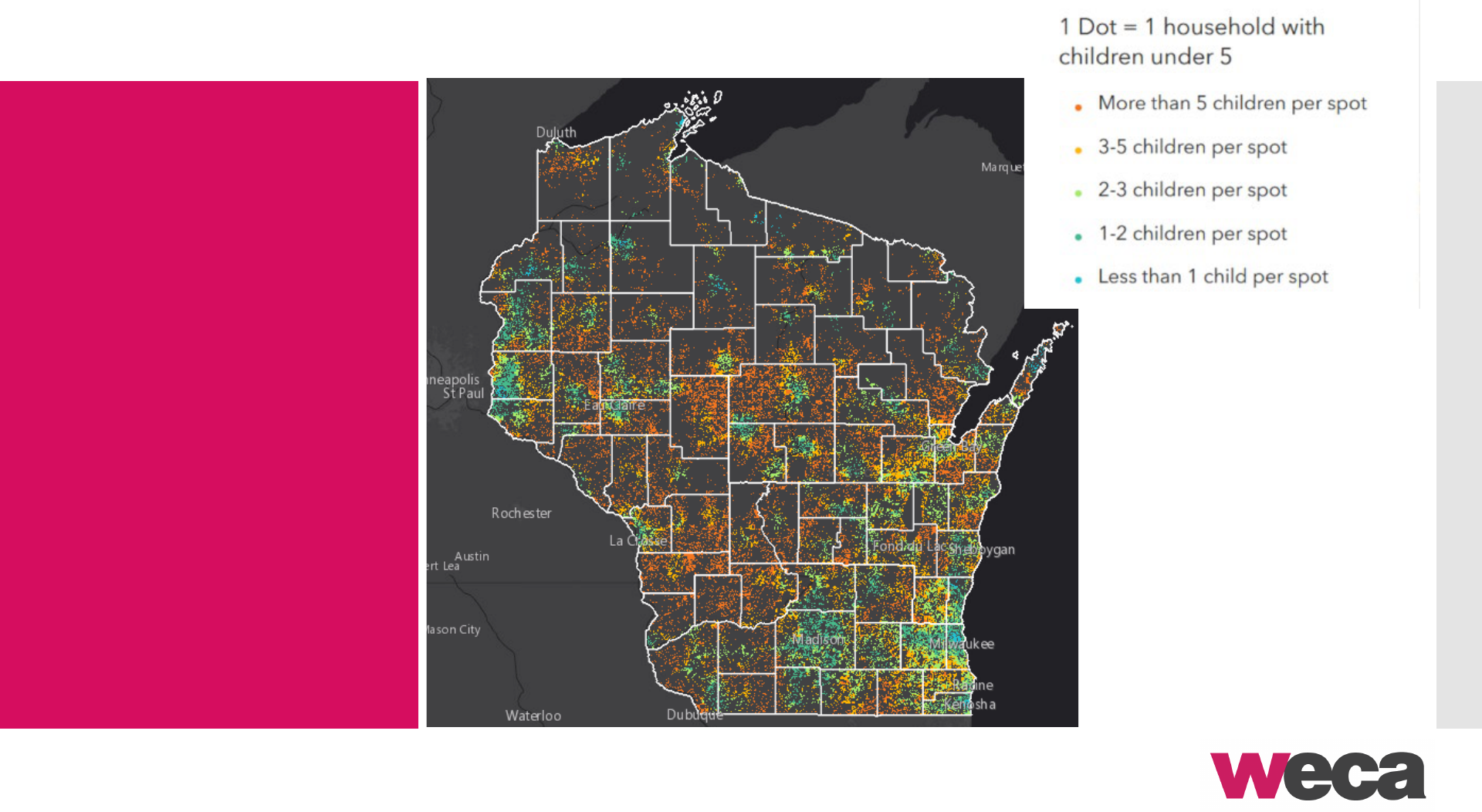
Rural Child
Care
“Deserts”:
Low Supply,
High Demand
• More than 70% of
rural Wisconsin is
considered a child
care “desert,” where
there is only one
licensed child care
slot available for three
or more children
under age 5.
Source: University of Wisconsin-Madison Applied Population Lab, 2020; Center for American Progress.
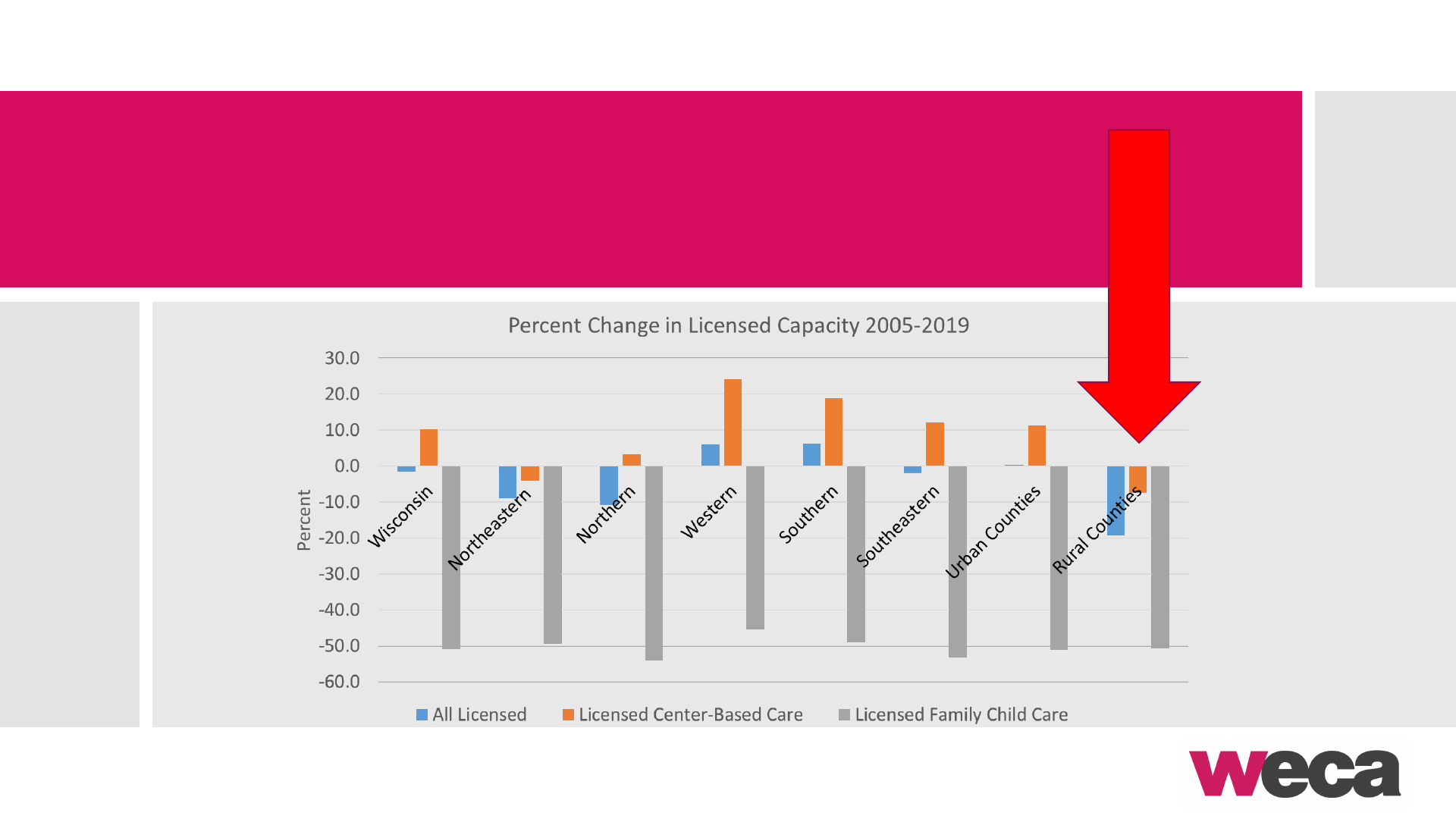
Trends in Child Care Capacity
Source: Claessens, Magnuson, & Pilarz, 2020.
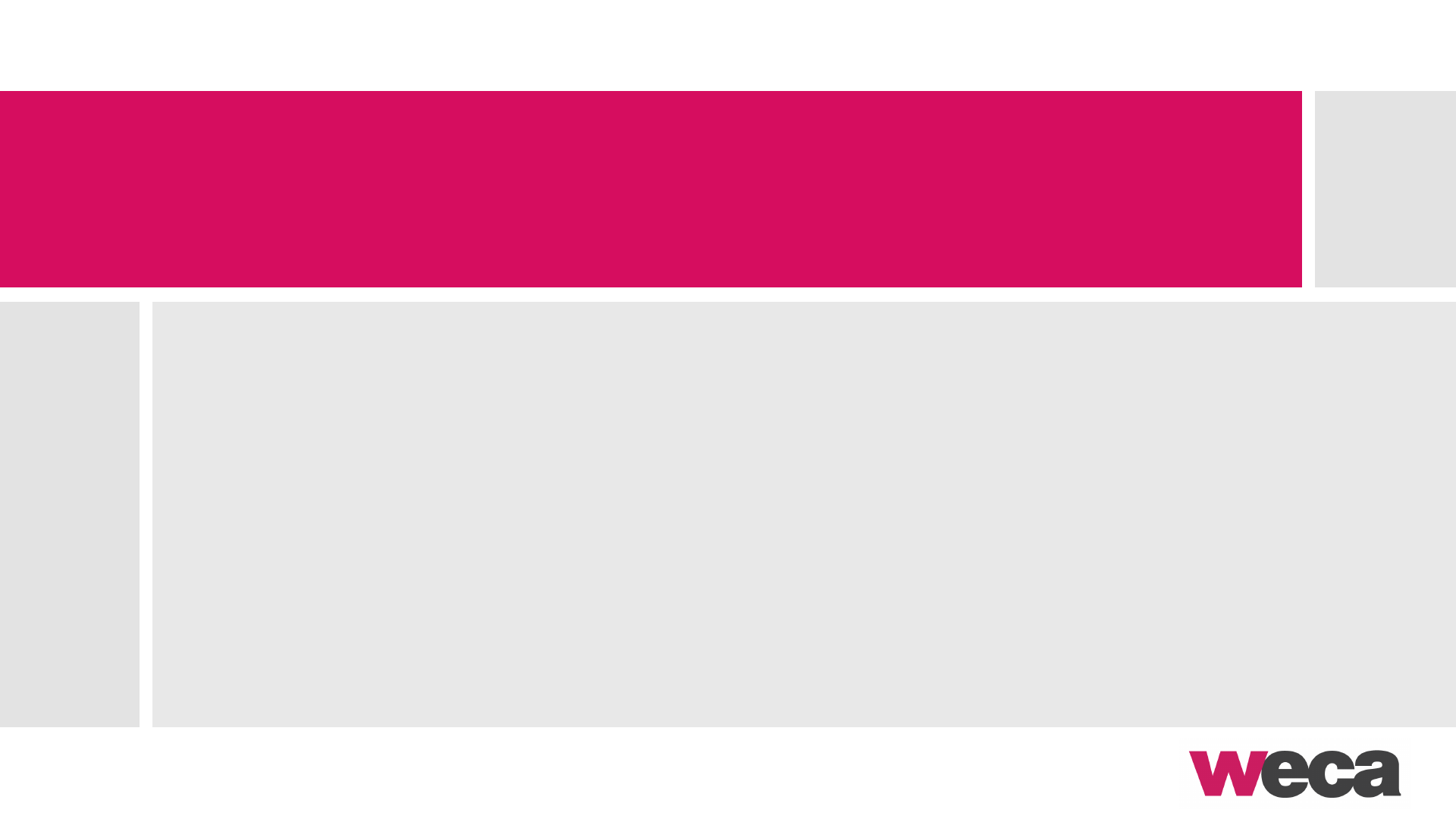
Child Care Cost & Affordability
Source: Economic Policy Institute.
High cost
The average annual cost of infant care across Wisconsin child care settings is $12,567,
or $1,047/month.
Unaffordable for Wisconsin families
Infant care for one child would take between 18.5%-25% of a median family’s income.
A typical family with two children would need to spend approximately 33% of their
income for child care.
A single full-time minimum-wage worker would need to use nearly 83% of their annual
income to pay for child care for an infant.
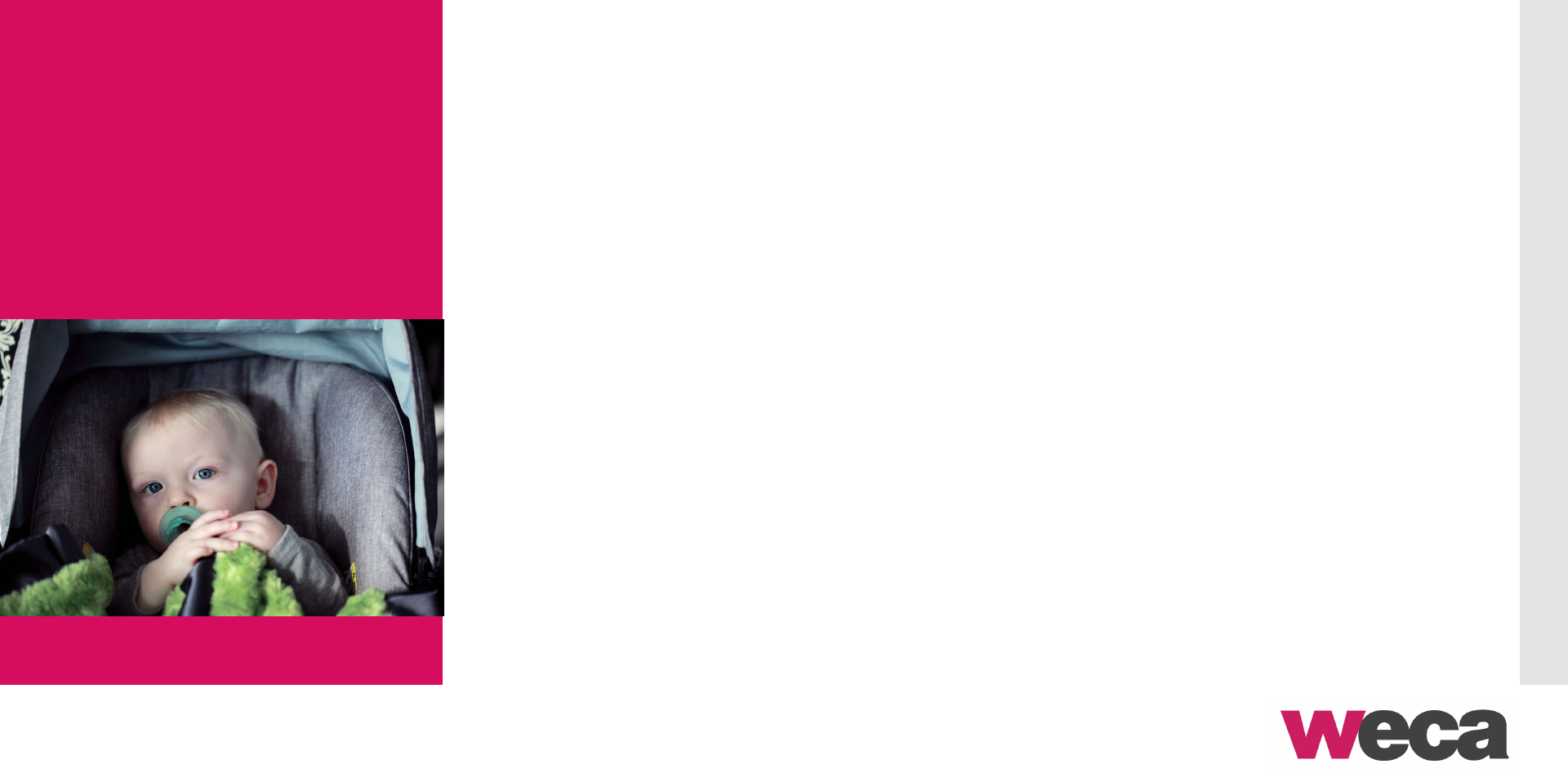
Unique Rural
Challenges
• Fewer children but much larger gap in available care.
• Rural parents are significantly more likely to have to drive
more than 10 miles to access child care. By comparison, for
parents in urban areas, this was around 3.5 miles.
• Nationally, rural areas are underserved far more often than
urban areas.
• Just 23.5% of need is met in rural communities.
• Despite higher overall number of slots required, urban
areas still meet approximately 75% of child care
demand.
Source: Bipartisan Policy Center, Supply Gap Report.

Child Care Influences Work & Workforce
Participation
Source: Council for a Strong America, Want to Grow the Economy? Fix the Child Care Crisis; Zero to Three.
• A staggering 86% of primary caregivers of infants and
toddlers said problems with child care hurt their efforts
or time commitment at work.
• Women’s labor force participation is key to economic
recovery.
• Pre-pandemic, 70.2% of Wisconsin infants had
mothers in the workforce compared to the national
average of 61.6%.

Rural Parent
Perspective
45% of parents indicate they or a
spouse provide care.
Of those who use care outside
the home, only 34% indicate
using regulated care.
Of rural parents who are not
working, 80% indicate child care
responsibilities influenced or
significantly influenced their
decision not to work.
Source: Bipartisan Policy Center, Supply Gap Report.
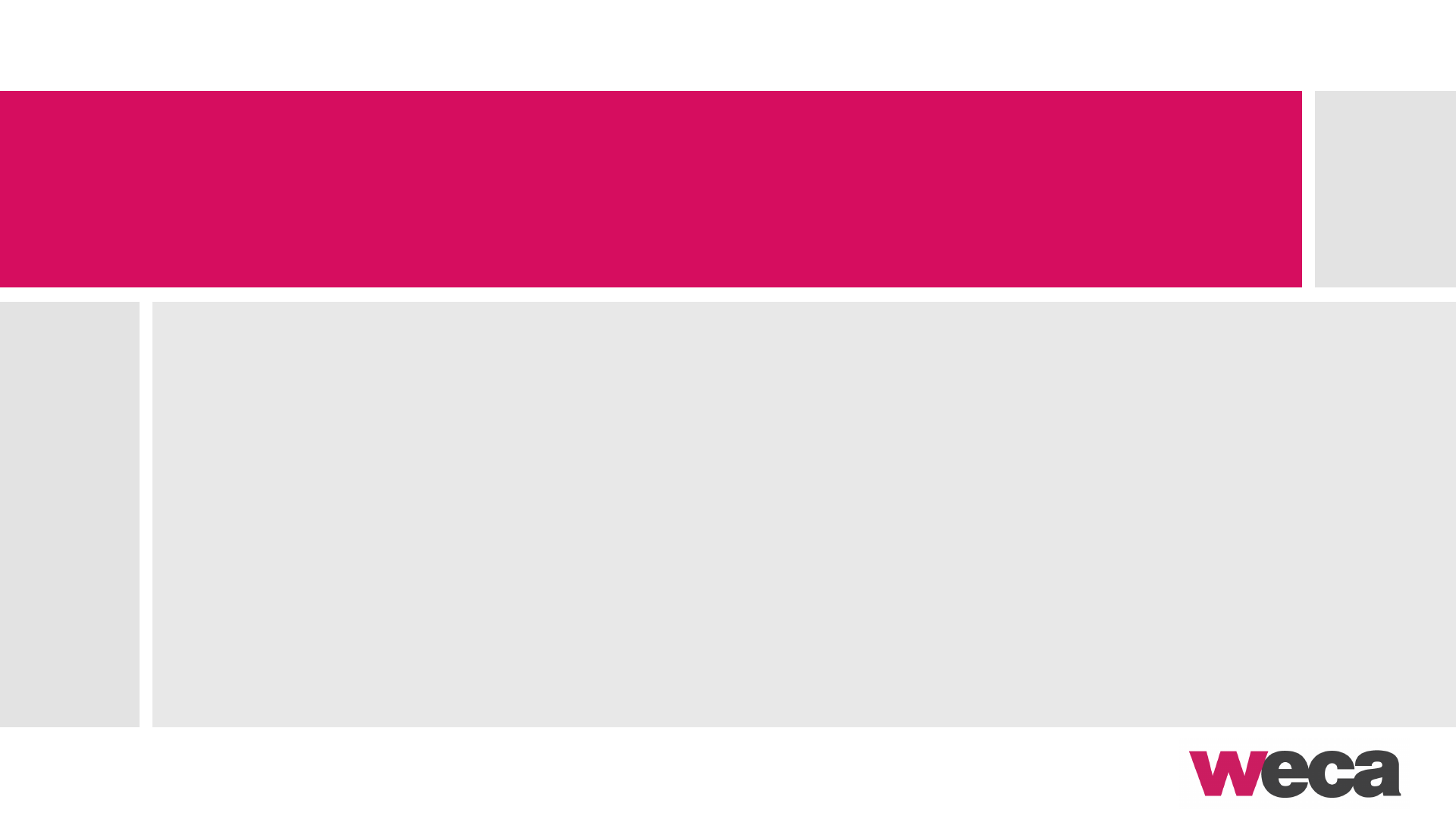
Child Care’s Economic Ripple Effect
Source: Testimony for Assembly Committee on Children and Families, March 2021; Wisconsin Public Radio.
“To come back to where I started – there is a direct correlation between Wisconsin’s
economy and Wisconsin’s childcare system. For the economy to be healthy, resilient,
strong and growing, we must create a system that works for the children, the parents, the
providers, and our businesses,” said Missy Hughes, WEDC Secretary.
“The lack of child care is keeping people out of the workforce or forcing them to work
part-time and that keeps the challenge of finding workers even greater than it is,” said
Chris Hardie, Executive Director of the 7 Rivers Alliance.

Business & Economic
Forums with
Legislators
WECA has organized forums of
business and community
leaders to share child care’s
impact with key legislators.
Forums have taken place in
several rural communities and
districts at leading businesses.
These discussions are critical
and ongoing. More will take
place in the coming months.
Source: Wisconsin Early Childhood Association.
Senator Devin LeMahieu Forum
Wisconsin Aluminum Foundry, Manitowoc
Senator Mary Felzkowski Forum
HSHS Sacred Heart Hospital, Oconto Falls
Senator Howard Marklein Forum
Southwest Health, Platteville

Impact of COVID-19
Relief Funding
Coronavirus Aid, Relief, and Economic
Security (CARES) Act
Coronavirus Response & Relief
Supplemental Appropriations Act
(CRRSAA)
American Rescue Plan Act (ARPA)

Wisconsin Early
Education Shared
Services Network
Leverages community, state and national
partnerships to benefit local child care
providers
Maximizes child care programming efficiencies
Shares staffing and administrative expertise to
reduce child care program expenses
Advocates for system level change to benefit
the child care sector
Source: Wisconsin Early Childhood Association.
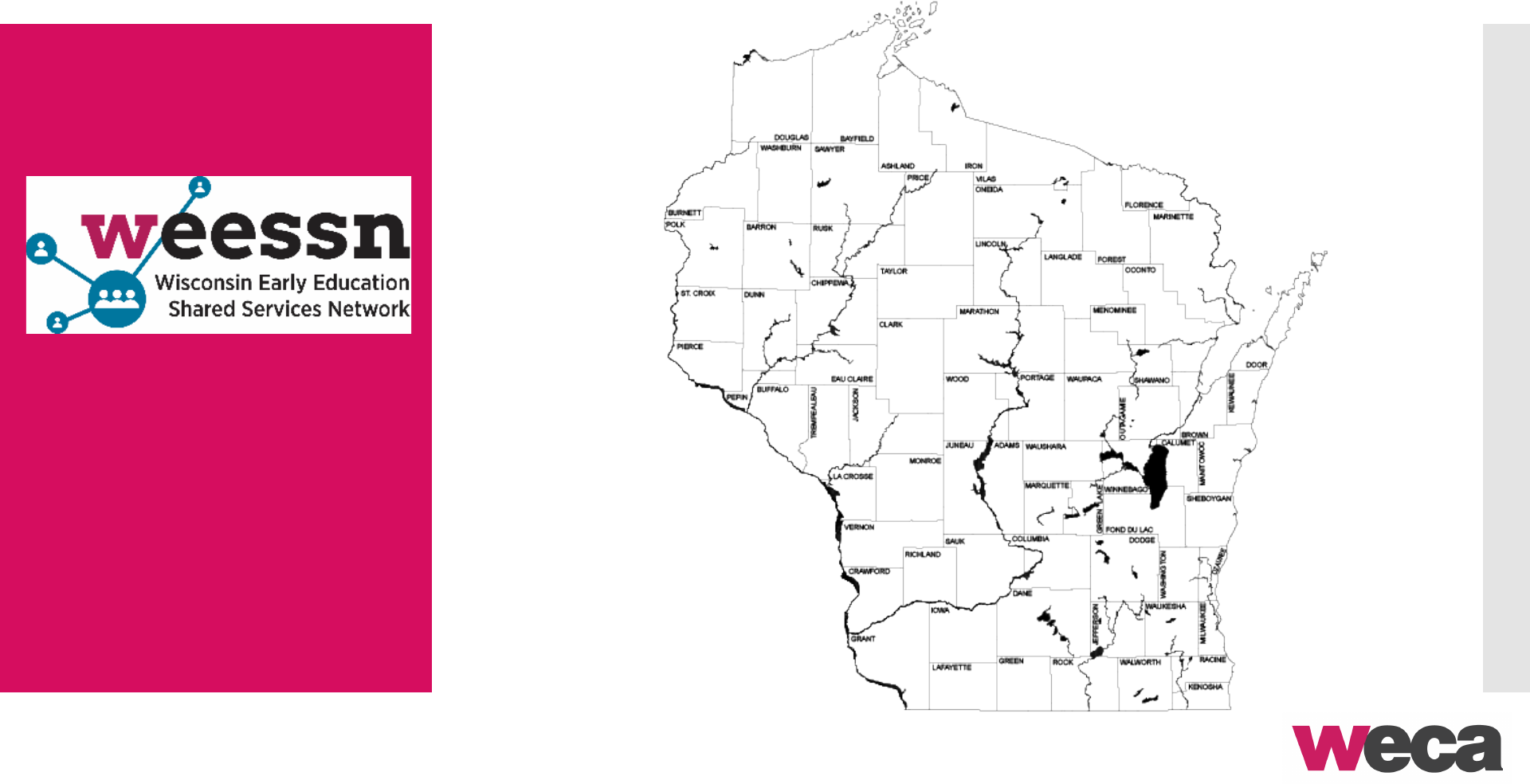
Dane County:
URBAN
16 FCC
22 GCC
State investments have been
made to continue expanding
WEESSN across the state
1,000 programs are enrolled
Source: Wisconsin Early Childhood Association.
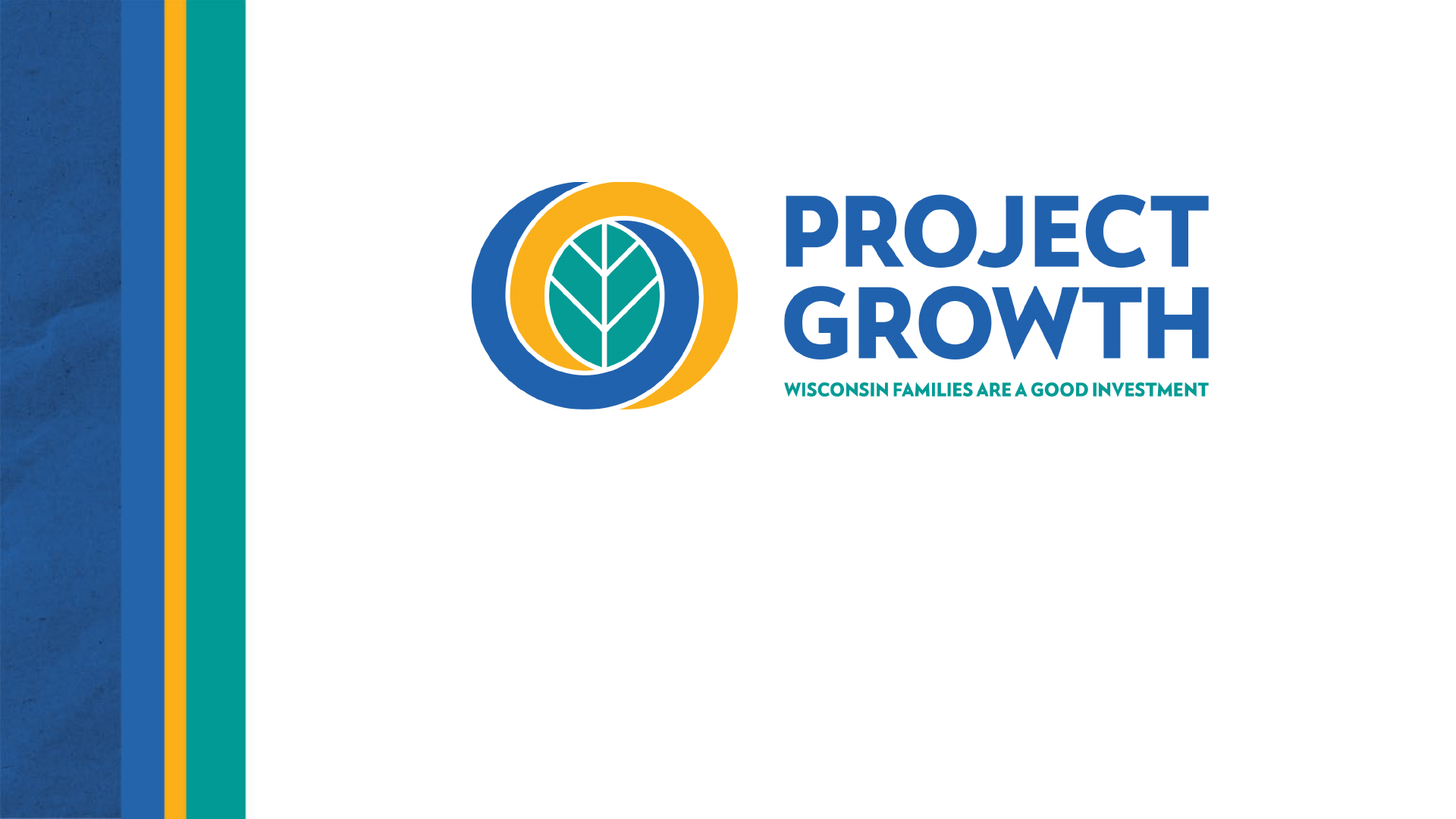
Learn more at:
ProjectGrowth.WI.gov

• Partner Up!
• Grant program
• Builds public-private partnerships via contracting for slots at the true cost of care
• Employers would contribute at least 25%
• Application period: February 28-April 4, 2022
• Dream Up!
• Grant program
• Fosters innovation and growth through community strategic planning, supply building
and collaboration
• Businesses, child care providers, community orgs and early learning providers can
apply
• Application period: February 28-April 4, 2022
Sign up for the upcoming February 28
th
webinar to learn more about each program. Starts at noon.
Source: Department of Children and Families.

Questions?
Ruth Schmidt, WECA Executive Director
(608) 729-1042
ruschmidt@wisconsinearlychildhood.org
For more information on WEESSN, contact:
Paula Drew, WEESSN Co-Director
(608) 729-1031
pdrew@wisconsinearlychildhood.org
Kelly Matthews, WEESSN Co-Director
(608) 230-8046
